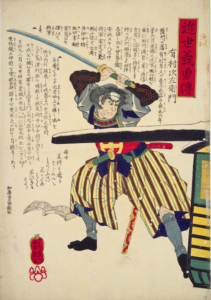I have been studying Meiji Restoration history for more than thirty years, since I began research for my novel about Sakamoto Ryōma while living in Tokyo. In all of my books, I have explored the personalities of the leading actors in this history, presenting it as a human drama of epic proportion—thus bringing it to life. My most recent book is Samurai Assassins, published in 2017. As I wrote in the Preface, the book
is more than just a chronicle of “dark murder” [assassination] in the revolution [Meiji Restoration]. It is also an in-depth study of the ideology of the men behind the revolution, including bushidō, the code of the samurai, and the philosophy of Imperial Loyalism, which informed the revolution and would become the foundation of the Emperor-worship of World War II. To the best of my knowledge, this is the first book in English to correlate bushidō and Imperial Loyalism in their respective indispensible roles in the Meiji Restoration. My previous book, Samurai Revolution, is a comprehensive history of the Meiji Restoration and the first ten years of Imperial rule. Samurai Assassins provides an in-depth overview of the Meiji Restoration, while focusing on significant men and events, and ideology, not expatiated in my previous book.
[The assassination of Ii Naosuke is the subject of Part I of Samurai Assassins. One of Ii’s assassins, Arimura Jizaemon of Satsuma, who delivered the coup de grâce, is depicted on the cover of the book. The image is part of a series entitled Kinseigiyuden (“Biographies of Loyal and Courageous Men”) by Ichieisai Yoshitsuya (1822 – 1866), originally published in a magazine called “Nishikie.”]


